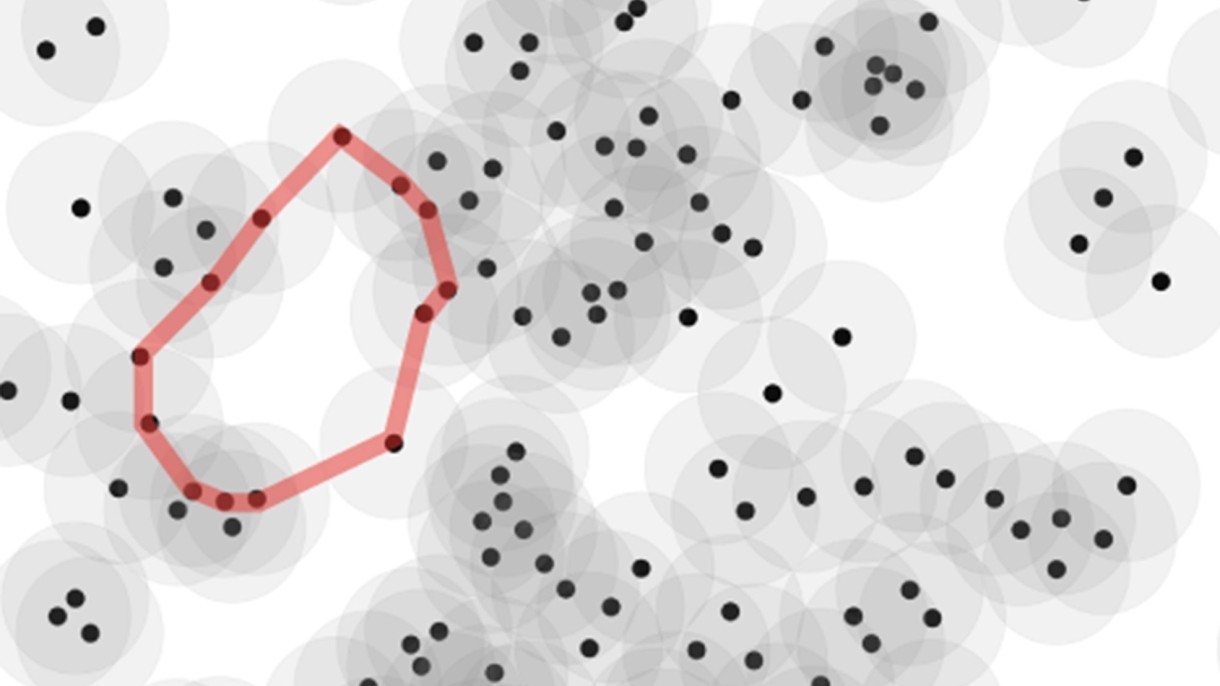Scientists utilize machine learning to uncover the organization of cells and the crucial role topology plays in the process

The research can aid in understanding how cells organize during embryonic development and the consequences of errors in this process.
Embryonic development is a crucial process for the growth and development of living organisms. The process involves the organization of cells in the right way, at the right place and time, to form healthy tissue. Failure in this process can lead to birth defects, impaired tissue regeneration, or cancer. Therefore, understanding how different cell types organize themselves into a complex tissue architecture is a vital question in developmental biology.
For the past few years, a group of Brown University scientists have been using topology, a branch of mathematics, to help the field get closer to understanding an elusive process.
A group of biomedical engineers and applied mathematicians have developed a machine learning algorithm using computational topology to analyze the shapes and spatial patterns of embryos. This algorithm helps study how cells organize themselves into tissue-like structures. In a recent study, the team took this system to the next level by enabling it to study how various types of cells assemble themselves.
“In tissues, there may be differences in how one cell adheres to the same cell type, relative to how it adheres to a different cell type,” said Ian Y. Wong, an associate professor in the School of Engineering who helped develop the algorithm. “There's this interesting question of how these cells know exactly where to end up within a given tissue, which is often spatially compartmentalized into distinct regions.”
During embryonic development in animals, the cells in the outer layer form the skin, the middle layer forms muscle and bone, and the innermost layer forms the liver or lungs. The cells in each layer have an affinity for each other, which means that they preferentially stick together, separating from cells in other layers that go on to form other parts of the body.
In the 1970s, researchers discovered that cells in frog embryos could be gently separated and, when mixed back together, would spontaneously rearrange into their original organization. This occurs because cells have different affinities for each other, and as they cluster and assemble, certain topological patterns of linkages and loops are preserved.
“In the context of these spatial arrangements of tissues, you can learn a lot from what's there, but also from what’s not there at the same time,” said Dhananjay Bhaskar, a recent Brown Ph.D. graduate.
The Brown researchers demonstrated in 2021 how their method can profile the topological traits of a single cell type that organizes into various spatial configurations and make predictions on it.
Originally, the system had a major issue - it was a slow and laborious process. The algorithm compared topological features one by one with other sets of cell positions to determine their differences or similarities. This process took several hours, hindering the algorithm's full potential in understanding how cells assemble themselves. Additionally, it made it difficult to accurately compare what happens when conditions change - a crucial aspect in investigating what goes wrong.
A new study has introduced a method to overcome the limitation of comparing large datasets of cell positions. The research team used persistence images, which are standardized picture-like formats to represent topological features, making it easier to compare these features. They also trained algorithms to generate "digital fingerprints" that capture the key topological features of the data, which allows researchers to classify thousands of simulations of cell organization into similar patterns without human input. This significantly reduces the computation time from hours to seconds. The researchers aim to infer the rules that govern how different cell types arrange themselves based on the final pattern. By tinkering with how certain cells are more or less adhesive, they can identify how and when dramatic alterations occur in tissue architecture.
The process has potential applications in understanding abnormal developmental processes and laboratory experiments involving drug-induced changes to cell migration and adhesion.
“If you can see a certain pattern, we can use our algorithm to tell why that pattern emerges,” Bhaskar said. “In a way, it’s telling us the rules of the game when it comes to cells assembling themselves.”
The research carried out by the scientists has shown the effectiveness of topology in providing a deeper comprehension of how cells organize themselves. This study has the potential to unlock new paths for further investigation into the mechanisms of cellular organization, which could lead to fresh insights into the development and functioning of living organisms. By utilizing topology to investigate the intricate nature of cellular organization, this research has made a valuable contribution to the field of biology and has the potential to transform our understanding of the basic processes of life.
POPULAR
- NASA predicts the Sun's corona behavior, revealing its mysteries using advanced computational methods
- Australia on track for unprecedented, decades-long megadroughts: Supercomputer modeling raises concern
- Revolutionizing precision agriculture: The impact of Transformer Deep Learning on water, energy demands

 How to resolve AdBlock issue?
How to resolve AdBlock issue?